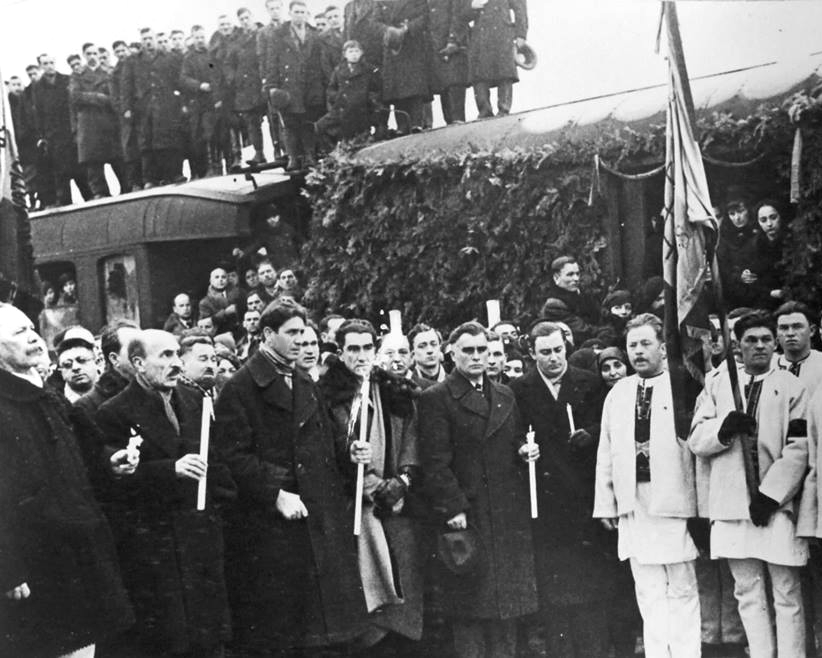Michael the Brave as Bram Stoker's Count Dracula
How did the life of Michael the Brave (1558-1601) influence Bram
Stoker’s novel Dracula? This Wallachian prince was, as Hans Corneel
de Roos has shown, the main historical basis of Count Dracula — when he was
still alive. De Roos’ research has
displaced the claim of Raymond T. McNally and Radu R. Florescu that Stoker based
his character on Vlad Țepeș.[1]
The 1590s in Eastern Europe have been described as “the time when the
fierce sword blows of the crusader Michael were striking against the Turks
along the Danube.”[2] Michael the Brave, later feeling
betrayed by his Hungarian allies, the Bathory princes of Transylvania, turned
his attention northward and controversially conquered that principality, with
the help of the Szeklers. Making
many enemies from Turkey to Central Europe, Prince Michael was assassinated in
1601. What was it about this man
and his era that inspired Bram Stoker’s conception of the ultimate threat to
the Victorian way of life?
Interestingly, McNally and Florescu themselves, at one point in Dracula,
Prince of Many Faces: His Life and His Times, note that a certain character
mentioned by the count appears to be based on Michael the Brave. What they do not mention is one
important detail it simply takes a careful reading of Stoker’s book to
understand. Namely, that the count
was speaking in the third person about himself in life.
In the count’s recollection in the third chapter of Bram Stoker’s Dracula,
the nostalgic rant that Jonathan Harker calls “the story of his race,” Dracula
describes an ancestor of his, whom Stoker did indeed base on Vlad Țepeș. Stoker, as De Roos has shown, confused
Vlad Țepeș, or Vlad Dracula, with his father, Vlad Dracul.
In making this mistake, Stoker appears to have reflected his source, William
Wilkinson’s 1820 book Account of the
Principalities of Wallachia and Moldavia with Political Observations Relative
to Them.
Stoker, again like his source, knew more about Michael the Brave than
Vlad Țepeș.[3]
This shouldn’t surprise us.
After all, Vlad Țepeș was a late-medieval, pre-Columbian historical figure, while Michael the
Brave was a figure from what Anglophone historiography remembers as the
Elizabethan era. Michael the
Brave, a relative of Vlad Țepeș and a more successful military strategist, was more often written about
in English than his predecessor until the 20th century. There is reason to suspect that Prince
Michael was written about contemporarily in Britain.
In Writing the Ottomans: Turkish History in Early Modern England, Anders
Ingram writes: “The years of the Ottoman–Hapsburg ‘Long War’ of 1593–1606
brought an unprecedented flood of English publishing on the Turks. A substantial portion of this material either
directly describes, or explicitly refers to, the events of this conflict.” During this time — which was also the
age in which the plays of Christopher Marlowe, which likewise display a keen
interest in Ottoman Wars, dominated English literature — England’s
“contemporary news market was dominated by foreign news, or reports of English
involvement on the continent, rather than domestic affairs.”[4]
Michael the Brave was a central figure of the Long War. Although not mentioned in Ingram’s
study, it would be an interesting task to determine whether and to what extent
the Wallachian prince was mentioned in any of “the fifty-four items on the
topic of the Turks recorded in the years 1591 to 1610,” of which “twenty-two
relate either directly to the Long War, the state of Hungary, or
Ottoman–Habsburg conflict, while numerous others allude to contemporary
events.”[5] Considering Prince Michael’s
outstanding role in the Long War, it would be more surprising to come up empty-handed
in this endeavor than to see this question answered in the affirmative. During the Long War, until his 1601
assassination, he was both an accomplished military commander and a
controversial political leader.
What effect did this have on the political dimensions of Stoker’s book?
And political dimensions there are. Bram Stoker’s Count Dracula, in the original novel, is not a
very physically attractive figure.
His vampiric habits are depicted as repulsive. The eroticization of the character, which came with later
adaptations of the book, is absent from the 1897 novel. Nevertheless, there is a certain Romanticism
attached to the character — though of a militaristic rather than erotic sort. “Blood is too precious a thing in these
days of dishonorable peace,” the count laments. It was a sentiment that was brewing in Europe during the
turn of the 19th and 20th centuries, in the decades leading up to the First
World War.
Why did Stoker choose Michael the Brave as the basis of a character
representing the peril posed by aristocratic militarism from Central and
Eastern Europe to Victorian values?
And why did Stoker at once romanticize and demonize this perceived
danger? Having established that
Vlad Țepeș is more or less a
“red herring,” Dracula scholars should now turn to Count Dracula’s correctly
identified historical alter ego to look for answers — and probably still more
questions.
Romanian version here
[1] De Roos, Hans Corneel, “Count Dracula’s
Address and Lifetime Identity,” collected in Crișan,
Marius-Mircea (ed.) Dracula: An
International Perspective, pp. 95-118
[2] Iorga,
Nicolae, Byzantium After Byzantium, tr.
Treptow, Laura, p. 149
[3] De Roos, Hans Corneel, “Bram Stoker's Vampire
Trap—Vlad the Impaler and his Nameless Double,”
Linköping Electronic Articles in Computer and Information Science 14 (2012),
no. 2.
[4] Ingram, Writing the Ottomans, p. 37
[5] Ibid, p. 37






Comments
Post a Comment